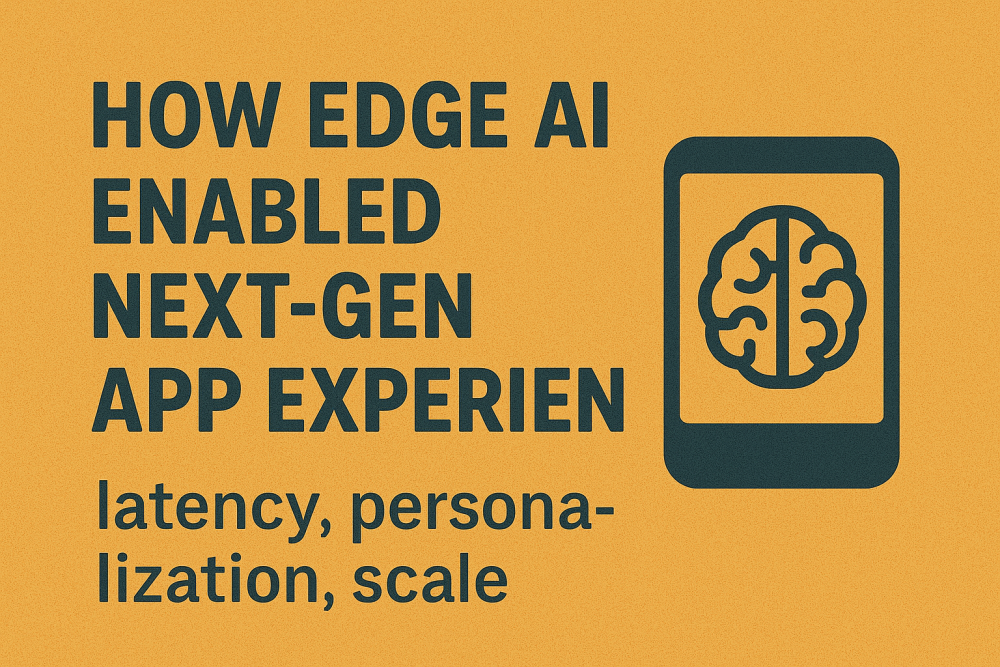The current digital world is mainly defined by speed and traditional cloud computing. As applications are increasingly demanding real-time responsiveness as well as deep personalization, sending data back and forth to distant data centers usually generates unacceptable latency. The solution to the above problem is the rise of Edge AI, a standard shift which is capable of embedding Artificial Intelligence processing directly onto or near the devices (“edge”) where data is being generated. By moving intelligence closer to the user, Edge AI is increasingly facilitating a new generation of application experiences which is characterized by near-instantaneous speed, tailored personalization, as well as exceptional operational scale.
Eliminating Latency for Real-Time Interaction
Latency, which refers to the delay before a transfer of data begins following an instruction, can be a major drawback of modern applications, mostly those that are mission-critical or interactive. Edge AI helps in addressing latency issues by removing the requirement for a round trip to the central cloud server.
In time-sensitive scenarios, this capability can be quite transformative:
- Autonomous Vehicles: A self-driving car must be capable of processing real-time sensor data from LiDAR, cameras, as well as radar, and usually make a decision in milliseconds. Edge AI helps in performing object detection along with path planning on-board, which in turn assists in bypassing cloud delays that could be fatal.
- Industrial IoT (IIoT): In an automated factory, artificial intelligence models operating on edge gateways are capable of detecting a slight change in machine behaviour and activate predictive maintenance promptly, averting a disastrous failure before the data even leaves the factory unit.
- Augmented Reality (AR): For a genuine immersive augmented reality experience, the application has to track the operator’s background and show objects virtually in real-time. Moreover, Edge AI supervises complex computer vision handling locally on the device in turn guaranteeing a lag-free experience.
Deep Personalization on the Device
- Context-Aware Apps: An app can use an AI based model running on the user’s phone for analyzing the local sensor data which might include location or time of day. This can be used for understanding the user intent. For instance, a music based app can use on-device processing for understanding heart rate data in real time from a smartwatch and regulate the beat to complement the user’s intensity of workout. This can be done all without sending classified biometric information to the cloud.
- Privacy-Preserving AI: Raw and sensitive information such as facial features, biometric data, or personal chats doesn’t need to be transferred over a network as it is administered and evaluated locally on the device. Just the small part of the insights or interpretation outcomes are sent to the cloud. This results in significantly improving user privacy as well as streamlining compliance with regulations such as GDPR.
Scaling Intelligence Across Distributed Environments
- Bandwidth Efficiency
Edge based devices can process, filter, and summarize large amount of raw information (such as video data from hundreds of security cameras) and send out just the key events or metadata to the cloud. This significantly lowers the required network bandwidth, lessens costs of data transfer, and blocks network bottlenecks.
- Distributed Scalability
Growing up with Edge AI means using an enhanced model across hundreds of low-power devices, not merely growing the size of a central data center. This distributed model is essentially more robust, letting devices to function independently even with occasional connectivity, making it important for isolated, industrial, or other environments.
Conclusion
Edge AI shows the next key development in computation, progressing intelligence from a central powerhouse to a distributed network of advanced end point. By solving the primary weaknesses of latency, unlocking personal and immediate customization, and enabling enormous, robust scale, it is the major enabler for the next gen of app experiences. From self driven cars and tailored healthcare to reactive factory automation, the upcoming future of advanced real-time technology is being built with the help of edge. This results in achieving a digital world which is fast, safe, and responsive to the human situation.
